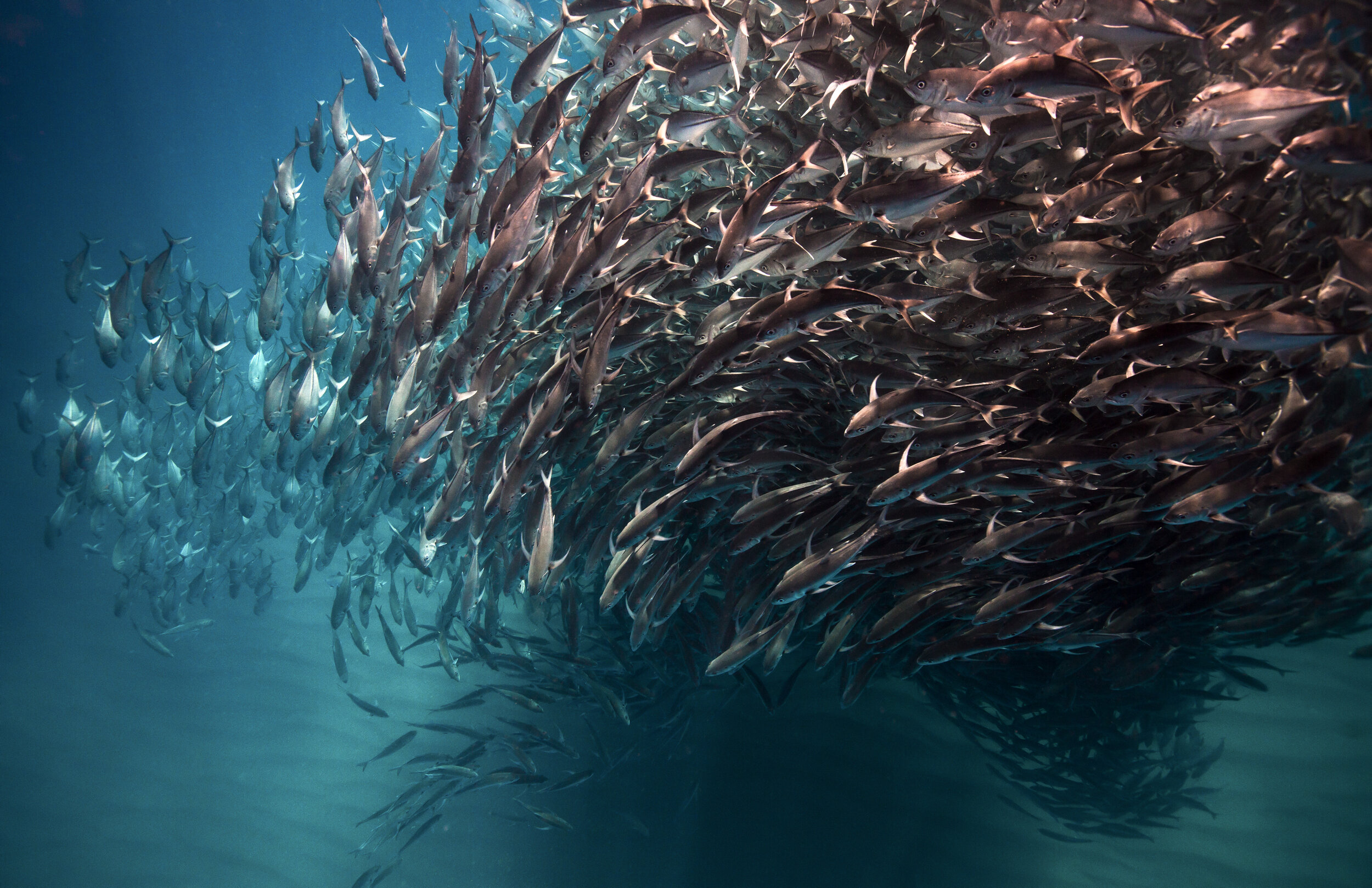Five years ago, I came across an article about 15 families on the east coast of the Baja Peninsula:
In 1995, the small fishing village of Cabo Pulmo was struggling to survive. Their waters were completely overfished, and the coral reef which brought in a small but increasing number of tourists each year was being heavily damaged by boats. With conditions deteriorating more each year, the village petitioned the government to create a marine preserve surrounding the reef, which at 20,000 years old is the oldest coral reef on the west coast of North America. On June 6th 1995, the President of Mexico declared a 27.46 square mile area surrounding Cabo Pulmo as a National Marine Park.
The next ten years were a struggle, as this decision required a complete reversal for the community from fishing to conservation. Their courage paid off, as in 2011 marine biologists surveyed a nearly unprecedented 463% increase in fish biomass (number of species in a given area), with a return of some species which had not been seen since the 1980’s. In 14 years of protection, every group of fish had returned, including sharks, rays, whales, turtles and dolphin - all of whom rely on the reef for habitat, food, and breeding. While the park is a strict no-take zone, fisherman quickly benefited from increased yields just outside park borders.
Cabo Pulmo has been heralded as a conservation success story and has since been designated as a UNESCO World Heritage Site (2005) and Hope Spot, in addition to National Park. It is a thriving eco-tourism destination, attracting visitors from around the world to dive and snorkel in a once-again thriving marine ecosystem. Dives within the park are incredibly well managed, with no more than 6 divers on a site at a time, and popular sites on a rotation with a rest period. The reef is blaringly noisy, an indication of good health which in turn attracts species from over a mile away. CP is a seasonal aggregation area for bull sharks, and while I wouldn’t recommend a moonlight swim they are incredible to dive with, congregating around one of two natural wrecks. It’s a location where anything can show up - whale sharks, dolphin, turtles, even Orca; and is well known for it’s incredibly large schools of fish and abundant diversity.
The above image is of a school of big-eye jack Trevally, the largest formation of fish I have seen throughout my diving career. Tens of thousands of fish, so thick you couldn’t see 3 feet into a slowly-swirling tornado that extended from the surface down to over seventy feet of depth. We were in the final stages of ascending from a dive when I saw the flashes from the baitball, and while shooting was limited to the surface, it meant more light, and for as long as they were willing to stay.
When I look at this image, it is a reminder that the experience existed solely due to the residents who had hope for their seas, and the vision and courage to enact conservation.
